Hermit Crabs, Snails, and a Spiral Prompt
Gratitude, spirals, and the "snail mail" postcard prompt for November
Today’s letter is a bit of a crab and snail mixup with a spiral- and gratitude-themed postcard prompt for November. (It’s literally snail mail.)
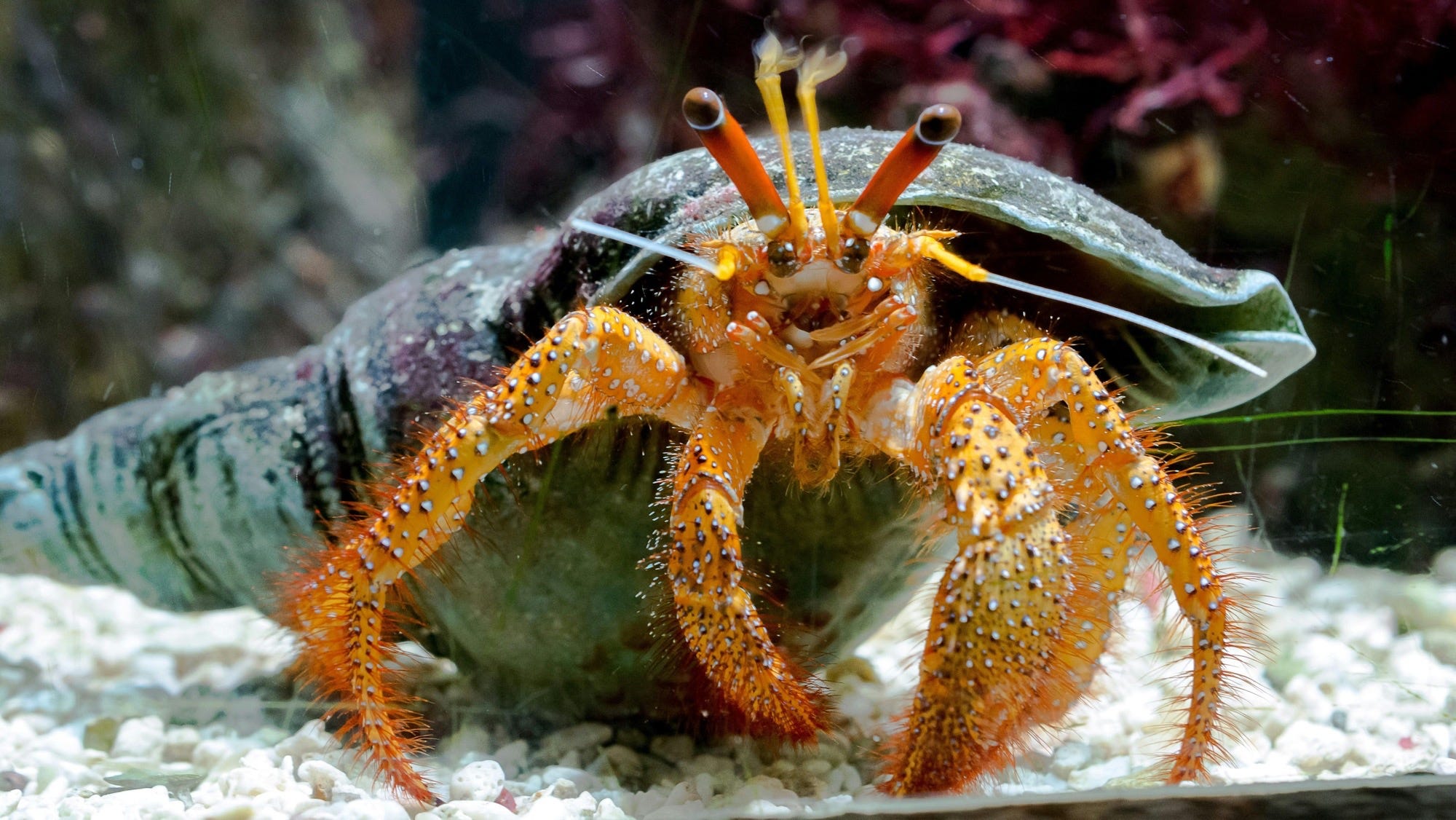
“The path isn't a straight line; it’s a spiral. You continually come back to things you thought you understood and see deeper truths.” — Barry H. Gillespie
Happy Sunday!
I don’t claim to be a big animal kingdom person. Big fat tabby, yes. Senior rescue dog with an old soul that wanted to sleep in my lap and that I could carry in one hand, yes. Anything else, no. Getting animal things wrong isn’t really a surprise. It might be more of a surprise that I keep landing in animal and science metaphors. This week I was writing about spirals, which made me think of the hermit crab. Everything seemed straightforward and delightfully interconnected, the dots lining up and branching out in multiple directions, until I realized I had the wrong animal.
When it comes to the hermit crab, I got things doubly wrong, which makes it a bit funny and a bit humbling. It is humbling to admit when we are totally wrong in our assumptions or our internalization of fact. We like to be right. We like for things to be however we envision they might be before we know the facts. But we do, at times, get things wrong. Sometimes we mishear something or, as in this case, we simply misthink. We grab for the wrong detail. Sometimes we file something away in our brains, and it’s slightly incorrect, askew but not enough to cause a scene. We typically don’t even realize we’ve got it wrong until we say it out loud to someone or, in my case, start asking questions of our writing.
It’s been a few months since I saw the “hermit crab essay” mentioned as a form for creative nonfiction. I ran into the phrase from the outside, a sound bite here and there, content I didn’t have access to at the time. The phrase itself was a springboard. I was enchanted by the idea of writing something that called upon the structure of a hermit crab.
I was enamored by the idea of hermit crab writing, the idea conjured by the words.
If I had taken time to look it up, I would have cleared up the misconception that had lodged in my head, but I didn’t.
I thought that hermit crab writing must surely be some kind of spiraling or meandering or circuitous or self-folding structure. That idea was enchanting in the abstract.
Imagine my surprise and, to be honest, my disappointment when I discovered that a hermit crab essay is actually a piece of writing in which the author uses a different narrative form as the vehicle for the telling. The telling borrows another form, like the hermit crab borrows a shell to make a temporary house. That form might be a recipe, a medical report, an instruction manual, or a business memo, for example.
In the hermit crab essay, the writer adopts another shell. This approach may open up an unexpected shape for conveying a story, but this was not at all what I had in my head.
I’m a clinger (apparently), even to things I have woefully wrong. I hated letting go of what I had envisioned. I wanted to believe in a spiraling narrative structure, an inward twining, not quite a labyrinth, but surely labyrinth adjacent.
What I had in my head is probably reflective of the way I approach writing. Maybe I’ll need to explore my own snail shell form. I am more braid and lyric than hermit crab, but I hated letting go of my misconception.
As I got ready to introduce the November postcard theme, which is related to the spiral, the hermit crab was ready and waiting.
Again, I had it wrong.
As we’ve now established, the hermit crab essay has nothing to do with a spiral, but, even worse, the hermit crab is really not about a spiral in the world either.
It is the snail that has a spiral shell. The hermit crab moves into a discarded or abandoned or empty shell as it constantly tries to find a larger and more fitting house, but it is the snail that grows a spiral shell.
Once again, I had mixed up my metaphors.1 I had clearly gotten my hermit crab and snail wires crossed. In reality, I’m not sure I’ve ever seen a hermit crab. As the words hermit crab essay continued to dance in the periphery over the last few months, the hermit crab nestled into a mental pocket with labels related to spirals. I filed it away as “like a snail” without even storing a thumbnail, without even stopping to think about the reality of “crab” vs “snail.” Since I have a natural affinity for the word hermit, it seems I bumped the snail for the hermit crab.
I wonder sometimes about the ways in which we get attached to our misguided thinking, our mixed metaphors, our incorrect definitions and pronunciations. Sometimes we willfully persist because we are attached.
Given that the hermit crab does often inhabit a snail’s shell, I could talk about the hermit crab in the context of spirals, but the snail is more apt. As I sorted things out, I learned that while the snail doesn’t discard its shell, it continues to grow its shell to accommodate its need for a larger space. When things get tight, it simply grows more shell in a spiral.
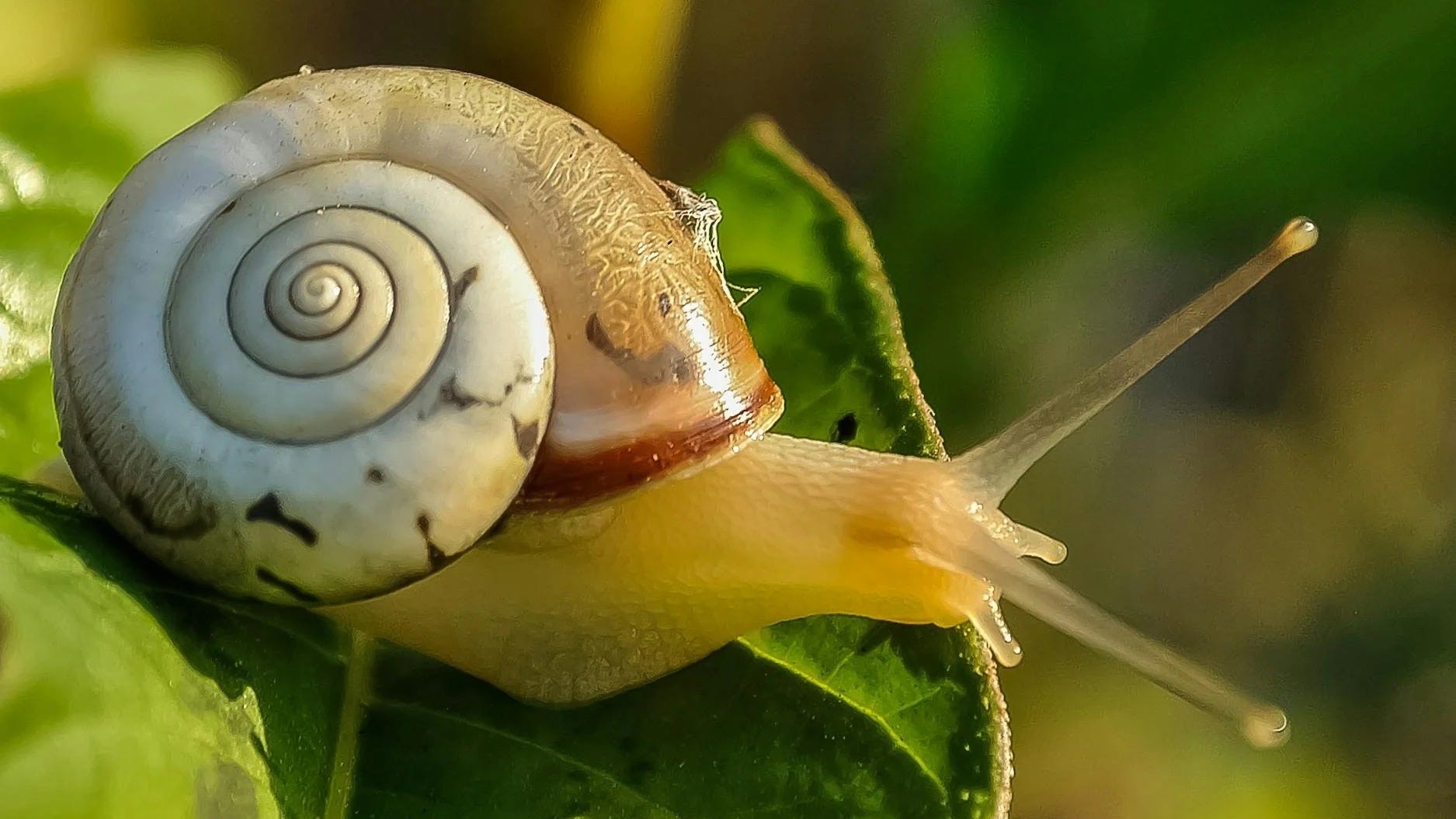
I think the hermit crab and the snail are both metaphors I will come back to. They are filed away with turtles, parrots, crows, and flamingos, but this week, the goal was simply the spiral. The winner is the snail.
So that is my bit of science for the week, although probably no one else needed these clarifications. There is a part of me that is delighted when I realize that not only have I gotten something wrong, but that I’ve learned something new and intriguing. The way a snail continues to expand its shell was that unexpected thread. (I’m sure I knew that somewhere along the way, but my trivia recall isn’t what it once was.)
Following the winding path, the yellow brick road of it all, I decided I should draw these things, capture the differences between hermit crabs and snails in line. (Putting things in chronological order, pulling up a photo may have actually been the catalyst, the moment I realized I had been thinking snail and saying hermit crab.)
After looking at photos of hermit crabs, I don’t want to run into one, but they are kind of cute. Snails, on the other hand, are not. Their shells are amazing, but, overall, snails are a bit on the icky side of things, especially when you call them slugs. But then I’m thinking of the snails that slime their way along the bushes outside after a rain. I haven’t seen an aquatic snail, but I am tempted to think a slug is a slug.2
The second postcard prompt, the November prompt, appears below.
I hope that some of you will again play along. The November prompt does have origins in gratitude. Even though gratitude is something that we can and should observe all year long, November has become a real touchstone for me in my gratitude awareness and habit and awakening.
Thank you for reading.
Amy
🎯 The Sunday post is free to all readers. Thank you to readers who have upgraded their subscriptions or made a donation. I believe in the value of our creative habits and routines. The quotidian is ours to explore.
For the best viewing experience, use the app or view in a browser.

Tracking Gratitude — Postcard No. 2
Our gratitude is individual. Like the lines and whorls on our fingers, our relationship with gratitude is unique.
Gratitude doesn’t have to be about big things. It doesn’t mean everything is perfect. Our gratitude can be most sustaining and most profound when things are falling apart. We can be grateful for things that are vast, things that are ineffable, but we can also be grateful for small things, for a favorite coffee cup, a soft pillow, the flash of a bird in the tree.
Finding gratitude in the quotidian can help center you, can help you find perspective, and can make a difference in how you experience the world around you.
Talking about gratitude is more commonplace now than it was a handful of years ago, or maybe it feels that way simply because I struggled with gratitude. I struggled to find my footing in gratitude as a mindset and a practice at a time when it seemed like things were falling apart.
I was a late-comer to the gratitude table, or, in my case, hilltop. I found my way there not as things got better but as things started to dissolve. When I first talked out loud about gratitude, I got emotional. I remember feeling like I was shedding my surface as I admitted that what I thought I needed was to focus on gratitude. It didn’t make sense to me, but my discomfort, and even my resistance, seemed important. I struggled with my sense that gratitude was a superficial practice, something that blurred or elided reality. I remember feeling silly. I might as well have been admitting I was going looking for unicorns in the park.
That was a beginning. I was struggling with fear and anxiety and worry over ongoing health issues in my house. I was feeling like there was no bottom to bottom, like I didn’t know where “bottom” was, but I recognized that something was increasingly hollow in me. Almost instinctively, I reached for something shiny, something I thought might be powerful. I reached for gratitude.
The next year, in November, I did 30 days of gratitude writing and recording. I found myself standing at the top of the hill, the literal hill on which I live, at sunset most days, and looking out, a point that lets me see the ocean and the bay, a point that puts the sky in motion overhead. I can turn in a circle and see the whole world. That’s how it feels, the moon over the bay, the sun dropping into the ocean, rose light warming the faces of the houses on the street. November has the best light.
That year, I gave myself over to the top of the hill, to my appreciation for all that was right then, for having that beauty within the distance of a short walk of our senior rescue. I noticed the colors of paint on houses after rain. I wrote about memory, about all that I don’t remember. I wrote about being present, being aware of things we take for granted, and appreciating things that are within reach.
I try to keep gratitude in mind all year long, but November is always a reset point, a month steeped in a gratitude mindset. I no longer cry when I talk about gratitude.3 Like most things, with practice, we get over our resistance, find our own patterns, move past the things that hurt, and find comfort in the routine.
I’ve done a number of November gratitude projects now, both written and drawn. I’ve tracked November light, the barest of diagrams showing the bands of the sky when I first walk into the kitchen and see the light over the bay in the distance. I’ve added gratitudes to daily planners and my Notion dashboard. There is really no wrong way to approach it. One year I did a series of portraits of people in one of my online communities. Two years in a row, I did large drawings to which I added a simple drawing each day of a concrete thing for which I was grateful. (Those projects are favorites.)
It may feel silly to focus on daily gratitude and on gratitude for small things, the favorite coffee cup, the favorite pencil, the familiar quilt, the cozy sweater from a loved one who has passed, but the practice is powerful. It is deceptively simple, but it can make a dramatic difference in how you feel. All that is wrong doesn’t go away. That remains the tension with gratitude. It isn’t an eraser. But something happens in the process of paying more attention, focusing, and looking around with intention and naming and recognizing our gratitudes.
“Spirals grow infinitely small the farther you follow them inward, but they also grow infinitely large the farther you follow them out.” — John Green, Turtles All the Way Down
Snail Mail — November Postcard Prompt
This month’s postcard prompt is gratitude infused, but on the concrete level, the prompt is a spiral.
A spiral is a winding path, one that either moves in on itself or radiates from the center out. In walking, tracing, or drawing a spiral, literally or figuratively, there is mindfulness, the coiling or unfurling of thought, the chance to see what sits or stands or dances at other points of the spiral as you pass again and again.
Mathematically speaking, there are a number of different types of spirals, including: the Archimedean spiral, the hyperbolic spiral, Fermat’s spiral, the logarithmic spiral, the lituus spiral, the Cornu spiral, the spiral of Theodorus, the Fibonacci spiral (also called the golden spiral), conical spirals, whorls, and the involute of a circle.
These quick line drawings (not mathematically precise) show some of the spirals listed above.
This elongated spiral doesn’t show up in the list, but we know this model from the world around us:
To multiply the fun, consider the triskelion (or triskele):
We can think about spirals in terms of galaxies (look up “barred spiral”), snails, pinecones, succulents, pineapples, and the horn of a goat. The list goes on.
As a metaphor, we can use the spiral as a path for mindfulness. We can walk the spiral in or out. We can wind our way around and back like a labyrinth.
For this month’s postcard, integrate a spiral and, if you are bold, let gratitude be your guide.
You may want to simply play with the spiral as an image. You might think about cinnamon rolls or the Fibonacci sequence or snails. Or you may want to use the spiral as the form of the writing, starting from the center and writing your message in a spiral. Maybe you choose a special quote or poem. Maybe you express your gratitude to the recipient. Maybe you simply write a letter as a spiral, something the reader will have to slowly spin to read.
There is mindfulness in the reading, too.
Primary or secondary, either way, gratitude is part of the November prompt. If the spiral isn’t of interest, you might use your postcard to document daily gratitudes (one a day). You might draw a series of icons of things for which you are grateful.
Gratitude Quotes
Here are a few gratitude quotes to get you started thinking and appreciating in November:
"Wear gratitude like a cloak, and it will feed every corner of your life." — Rumi
“Gratitude bestows reverence...changing forever how we experience life and the world." — John Milton
"Piglet noticed that even though he had a Very Small Heart, it could hold a rather large amount of Gratitude." — A.A. Milne
“Happiness, not in another place but this place...not for another hour, but this hour.” — Walt Whitman
“Gratitude for the present moment and the fullness of life now is the true prosperity.” — Eckhart Tolle
If you made and sent an October card, we would love to see what you did with the costume-themed prompt. If you share in social media, please tag me and use #PostcardPrompts.
“We are not going in circles, we are going upwards. The path is a spiral; we have already climbed many steps.” — Hermann Hesse, Siddhartha
Weekly Bits and Pieces
Made It?
Thank you for reading along! I always enjoy your comments and invite you to chime in. Let me know what stands out for you, what you think after reading, or where we connect.
Gratitude is something that will reappear throughout November. The postcard prompt is just an opening of the door. I do encourage you to do something gratitude-themed over the month. I really have talked about this a zillion times through the years, starting the conversation with an awkward podcast in 2016 and then 30 days of gratitude podcasts in 2017. I’ve done smaller versions in the years since.
Snail or slug
Your favorite spiral in the world around you
A project for November
2 if you did the first postcard and are ready for the second one
Stamp if you actually mailed the October postcard
Jack-o-lantern, witch, or skeleton
(Thank you to PRINT for inviting the postcard prompt series. I hope all of you check out PRINT. You’ll find Debbie Millman’s wonderful Design Matters podcast and the What Matters project, but also a wonderful array of writers in the Creative Voices section.)
Thank you for reading Illustrated Life. Writers need readers, and I am grateful for every reader!
Paid options are available for those who can and want to support Illustrated Life, the podcast, and the weekly #illustrateyourweek prompt series. Subscriptions not your thing? One-time donations are always appreciated.
Unless otherwise noted, all images in this post are ©️ A. Cowen. All rights reserved.
Links to books are Amazon affiliate links. Always check your library.
I conflated the ostrich and flamingo recently in talking about burying one’s head in the sand.
I’m having a soft morning as I do my final edit and thinking I might be wrong and might find that snails are beautiful and intriguing.
That may not be true this year. I expect this gratitude month to be especially hard.





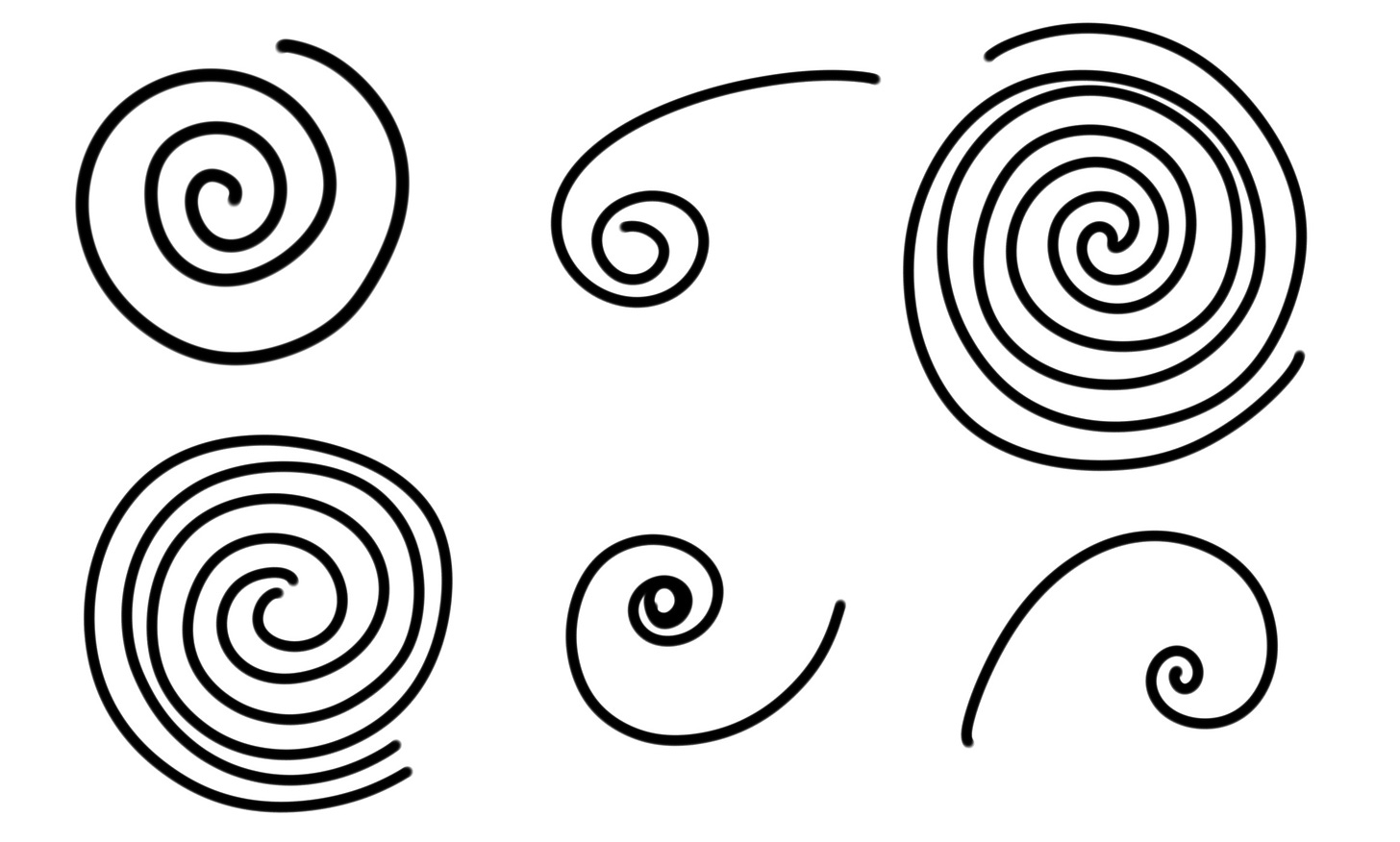
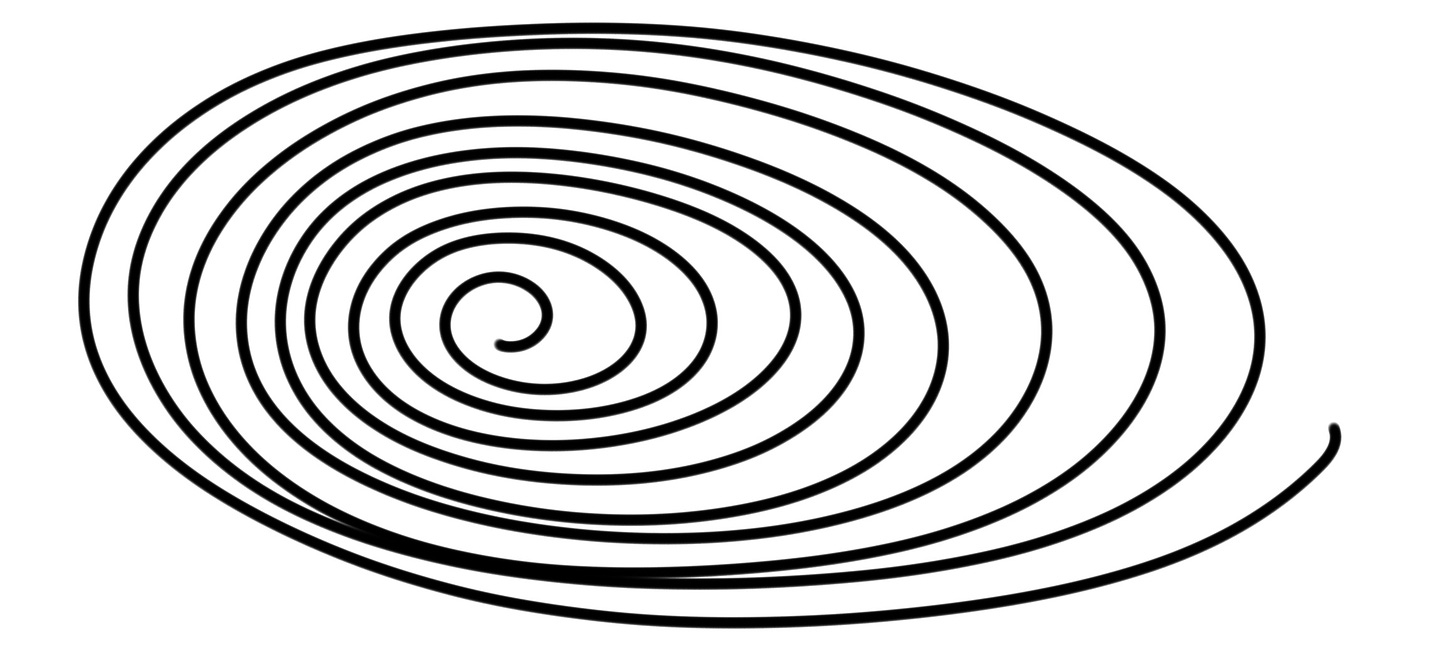
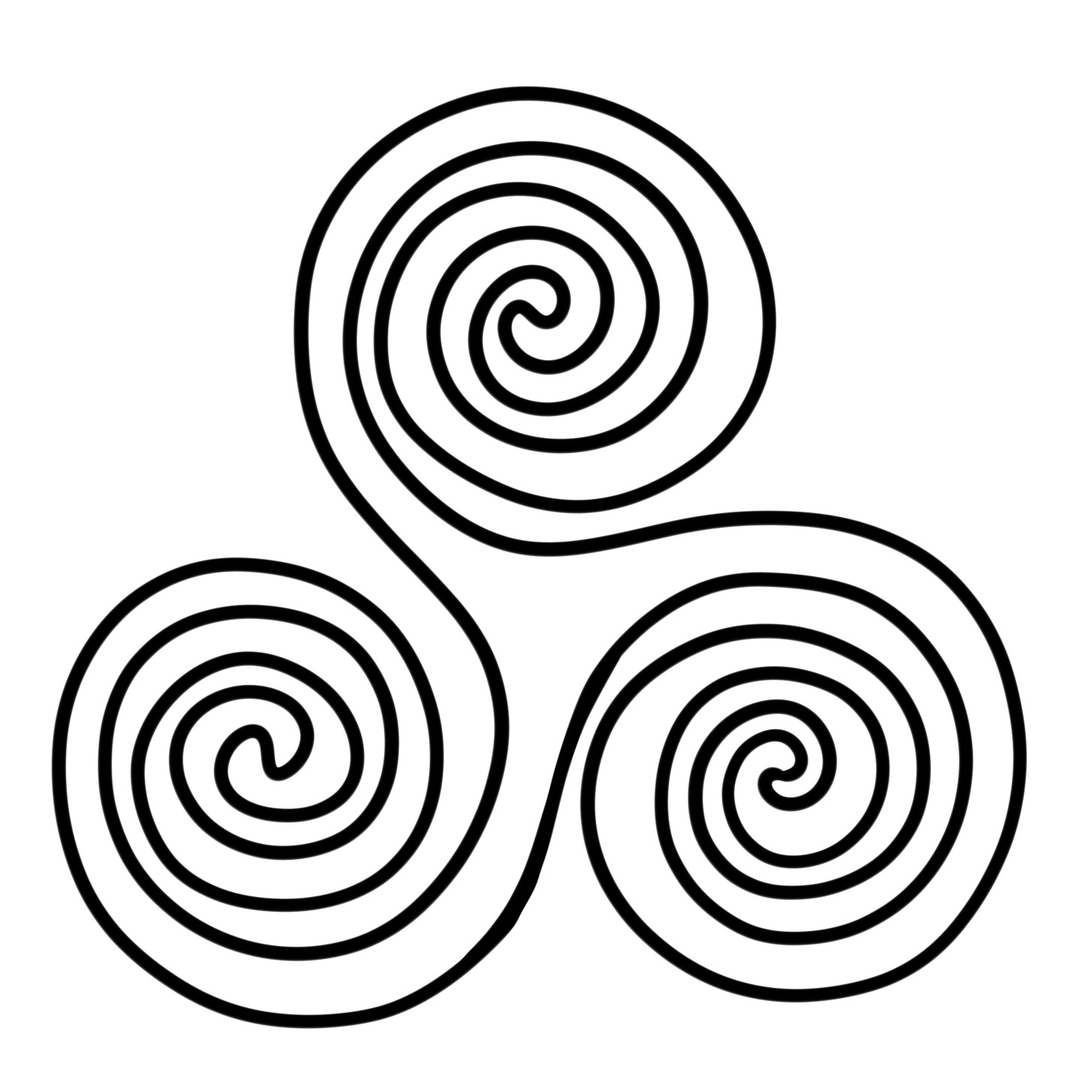
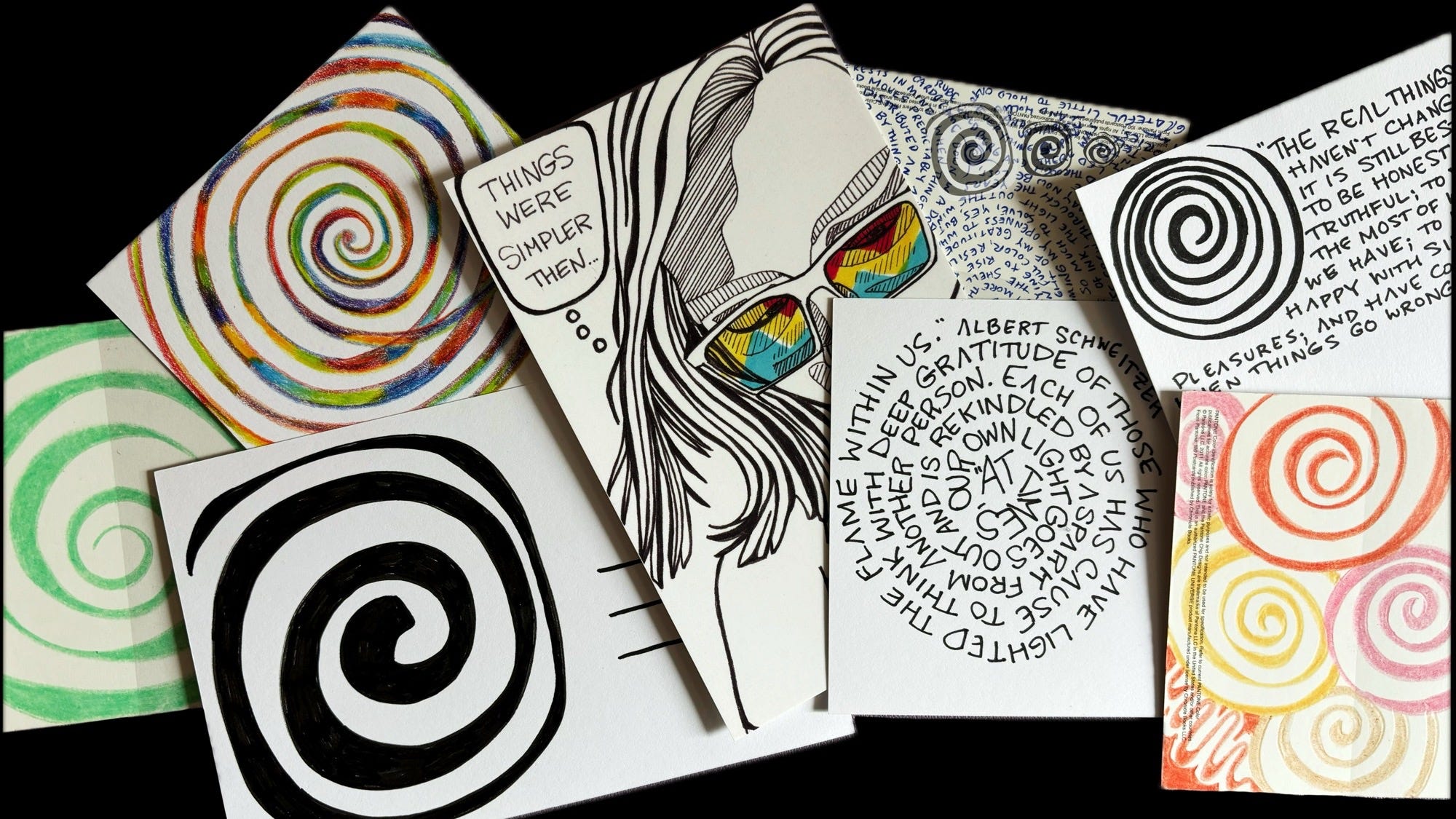
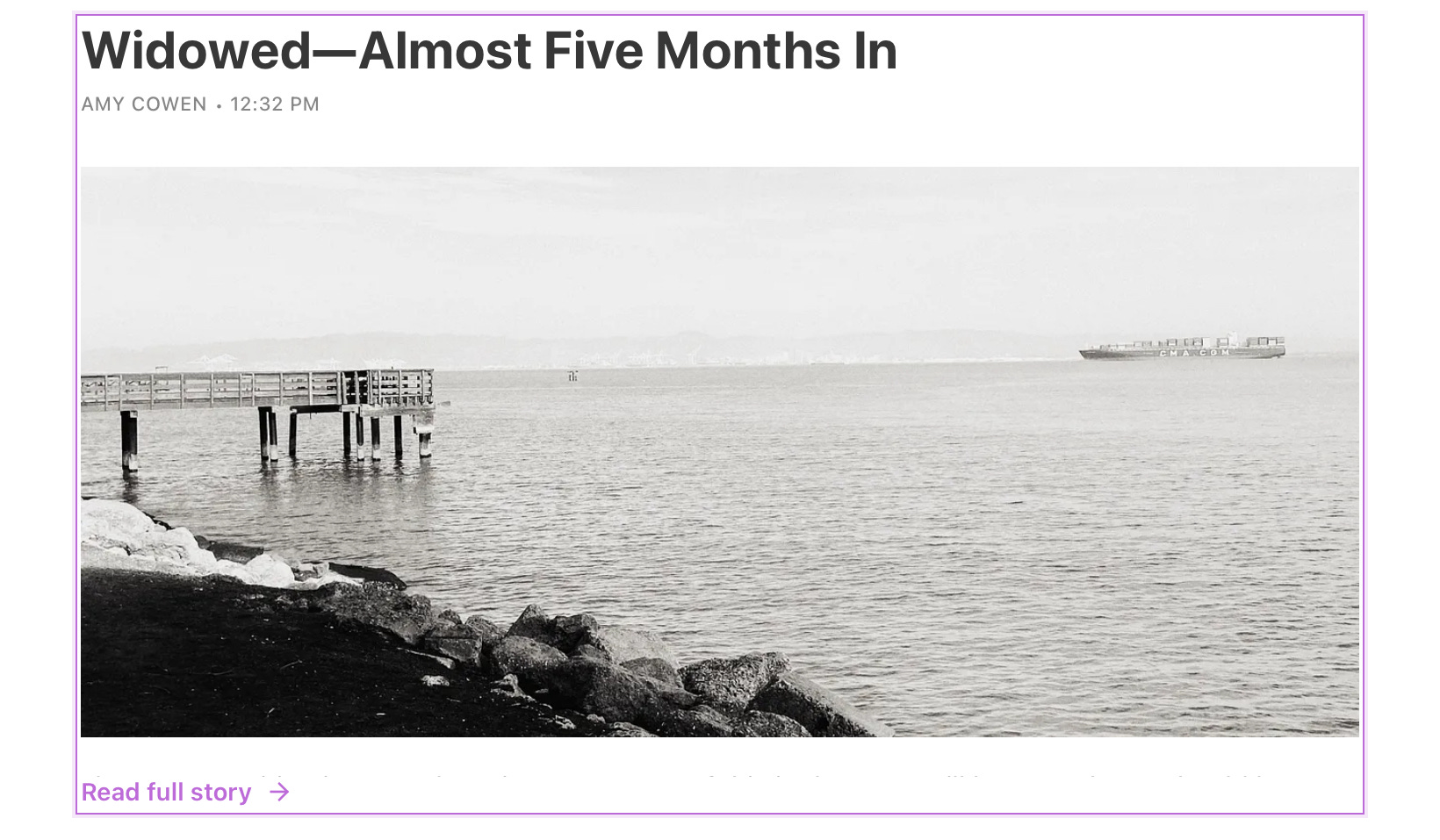
your photo caption hit me like a brick, the five month mark of loss. i still want to reach out to you, stranger/not stranger, weaver of words that you are, with some magic balm to ease the pain.
when i opened my email this morning, the first post was from another substack writer i follow who is the daughter of an old friend. hers (at shangrilogs) is about a five month mark, too - those five of losing her sense of self in the care and feeding of a new baby.
serendipity.
yes, i did mail and craft a postcard for october, sent to australia. your spiral examples triggered memories of the 70s - and good gawd how can that now be a past era and my current age group? - in which i painted large rocks. one had the desiderata painted in a spiral on it’s broad surface.
i am fascinated by ammonites and so i choose snails over slugs. similar patterns. plus, i think i have a resident snail in my garage. it leaves iridescent trail maps on the step into the garage from the kitchen. there is not much food source in the garage so it’s a mystery why it visits. but hey, i see you…slimy interloper…
thank you for writing, amy.
Well, little crabs, at least you got to be in the spotlight for a little while, even if it was by accident. 😅
Coincidentally, I came upon a tiny snail here just yesterday, as I upended pots of sweet potatoes, grown mostly for the attractive vines but always fun to see if we get any appreciable harvest (answer: a basket full). We are all too familiar with slugs, which I like to say are unhoused snails, but their shelled cousins are less common. Imagine being able to just grow a bigger house, as needed?!
I love your circuitous spiral, your initially reluctant gratitude practice, and all that you have and are experiencing through that.
Like Kathi, below, I wish there were some way to ease the burden for you while simultaneously not expecting you to be done with it. There is no being done with it. Only the eventual ability to carry it differently. Does it help at all to be reminded that you're not invisible here?
I want to read the widow post again. Thank you for sharing it and for knowing that getting it down is part of your process.